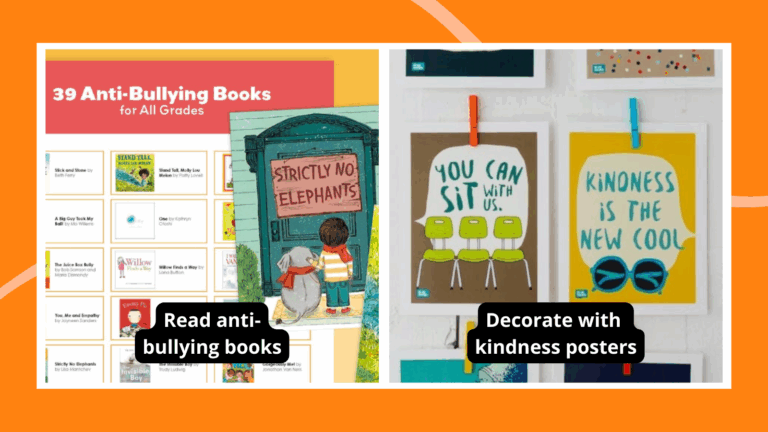Recently in the WeAreTeachers HELPLINE group on Facebook, a fifth grade teacher wrote: “Help! My principal told me that one of my girls is cutting herself. It turns out she cut herself once in my classroom and I missed it. Her mother is being told today. Any advice? I know nothing about how to support a student who self-harms.”
Educators often face situations that fall well outside of the scope of teaching and are beyond the training they received in school. Knowing how to support a student who self harms can be a daunting responsibility for anyone.
The reality, though, is that more and more teachers are getting that on the job training in real-time as the instances of self-harm increase. According to Screening for Mental Health, Inc., self-injury is one of the least understood risky adolescent behaviors and is growing at an alarming rate. An estimated 12 to 37 percent of adolescents engage in self-harming behavior.
Several WeAreTeachers HELPLINE members with first-hand experience chimed in to offer advice on what to do.
1. Take action.
“As an educator, and mother of a daughter who has extensively self-harmed,” HELPLINE member Jenn M. says to “take action immediately. Once a cutting habit has been formed, it is extremely difficult to break. If you suspect your student is self harming, please take a special interest because you absolutely can make a tremendous difference.”
2. Know the signs.
Students who self-harm are good at hiding it. You can keep your radar tuned for signs of the most common forms of self-injury, which include cuts that are in lines on arms or legs, repeatedly picking at scabs, eraser burns, using matches or cigarettes to burn the body, hair-pulling, head banging, and punching walls or self.
HELPLINE member Ruth F.C. says, “I watch closely for those types of behaviors and report them immediately.”
3. Trust your instincts.
According to Educators and Self Injury, which is an excellent resource for teachers with questions about self-harm, “The number one thing to remember is that you should not ignore anything suspicious. If your gut instinct tells you that something is going wrong with a particular student, follow up on it.”
4. Get the facts.
Cutting, also know as non-suicidal self-injury, can be difficult to understand. The Savvy Psychologist offers 4 Surprising Facts about Cutting and Self-Harm to help you come to terms with the student’s behavior.
5. Rely on the professionals.
Several teachers responded with the same well-informed advice to “let the counselor, social worker, and/or admin handle all the professional stuff.”
One teacher added, “She just needs you to be there and be the constant. I had a cutter when I taught fifth grade. She told me it was happening. To let the admin and core team know, I walked her myself to the office and gave her a hug on the way. When she came back I told her that if she ever wanted to talk I would be there for her, and I wouldn’t push her to talk if she wasn’t ready. But I did move her desk so I could see her at all times.”
6. Show you care.
Amy L.B. suggests, “There is most likely nothing you can do directly. Instead be a consistent and supportive teacher for her, and listen to her when she wants to talk or vent. She just needs to know that there are adults out there who care and support her. The direct help should be done by professionals trained for that sort of thing.”
7. Create a safe space for all.
School Counselor and Licensed Clinical Social Worker (LCSW) Lauren Frankenbach echoes the importance of making students in your class feel cared about and safe. “Teachers can have a huge impact on the well-being of their students by creating an environment that makes them feel emotionally, physically, and psychologically safe. Every day.”
She adds, “That means offering support and help when students need it, but also setting clear boundaries about not tolerating name calling or any unkind behavior.”
8. Just be there.
One university student who is studying to become a teacher shared, “I was a child who self harmed and honestly the last thing I ever wanted was to be cornered about it by adults. I had one teacher who let me know she knew in a very subtle way and was just a constant support for me. She always had an open door policy, was always open to chat even about nothing, which is what I needed a lot.”
“That teacher was the best thing that ever happened to me and probably the only reason I got through school. Next year I will graduate university as a teacher and she is and always will be a shinning example to me of the importance of teachers. Just be there for support. That’s the most important thing you could ever do.”
Another HELPLINE responder put that recommendation to work recently with a student who was cutting. “This literally just happened to a child in my class, so I invited her to sit in a nice spot on campus and told her that I think she is a beautiful, talented, and intelligent girl. I wanted her to know she has someone on her side and if she wants to talk, I’m here for her.”
“We also discussed some ideas for things she could get involved in after school. Thankfully we have a fantastic school psychologist who already assessed her. We are referring her for a special service where she can learn some coping strategies. I’m just thankful to be able to let her know I’m here to talk anytime she wants. That’s the biggest thing we can do for our students when they are hurting and need someone.”
9. Give yourself a break.
“Don’t blame yourself if you miss the signs of a student cutting in your classroom,” says teacher Nicole B. “There is no way to see everything that happens all of the time.”
Nicole also suggests that having a place where any student can go if they need a break (office, counselor, another teacher’s room) can help diffuse overwhelming stress or anxiety. “Encouraging students to write or draw about their feelings in a notebook can also help.”
10. Limit access to sharp objects.
Abigail D. shared a reminder to “make sure the student doesn’t have access to sharp objects in class.” This advice is prudent for all students. Keep close tabs on scissors, pencil sharpeners, and tools used in art classes and maker spaces. While students may have legitimate reasons to use them in class, they should be well supervised, and the supplies should be counted and secured when not in use.
Alison S. adds, “Be aware that those small pencil sharpeners break apart and there is a razor blade inside that self harmers use to cut.”
11. Teach healthy coping strategies.
Teacher Eli says, “Keep an eye on her. Try to get her to hang out with positive influences. Teach her how to cope. Teach her how to ask for help and talk out her problems.”
Teaching your whole class healthy ways to deal with stress can benefit struggling students without addressing them directly. However, experts advise not to speak about cutting or other self-harming behavior in a group or class setting. “Exposing kids to the knowledge can be a trigger,” says Frankenbach.
12. Review and revise your school policies.
The Educators and Self-Injury author Dr. Laura Mueller offers a free e-book download on the website that includes a template for school protocol, forms for notifying parents, and more. Also consider sharing this SOS Self-Injury Packet with your school administrators and healthcare professionals.

